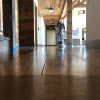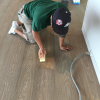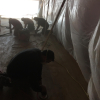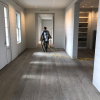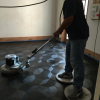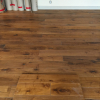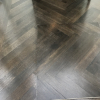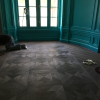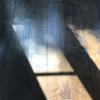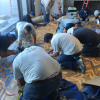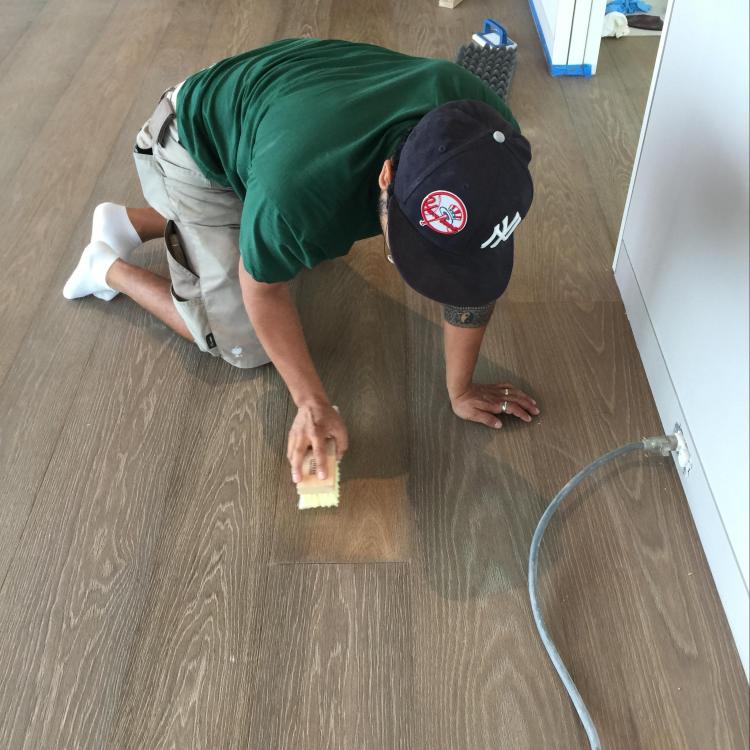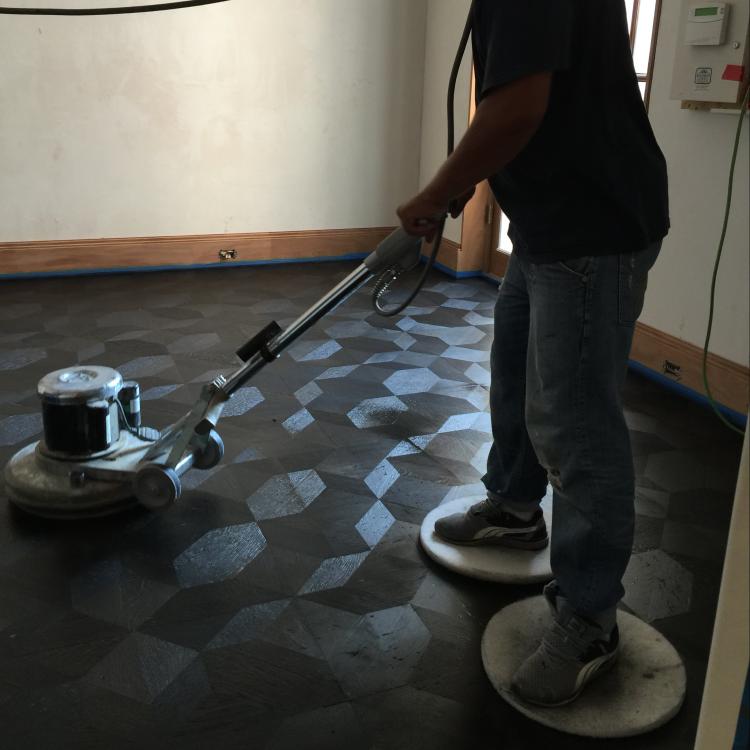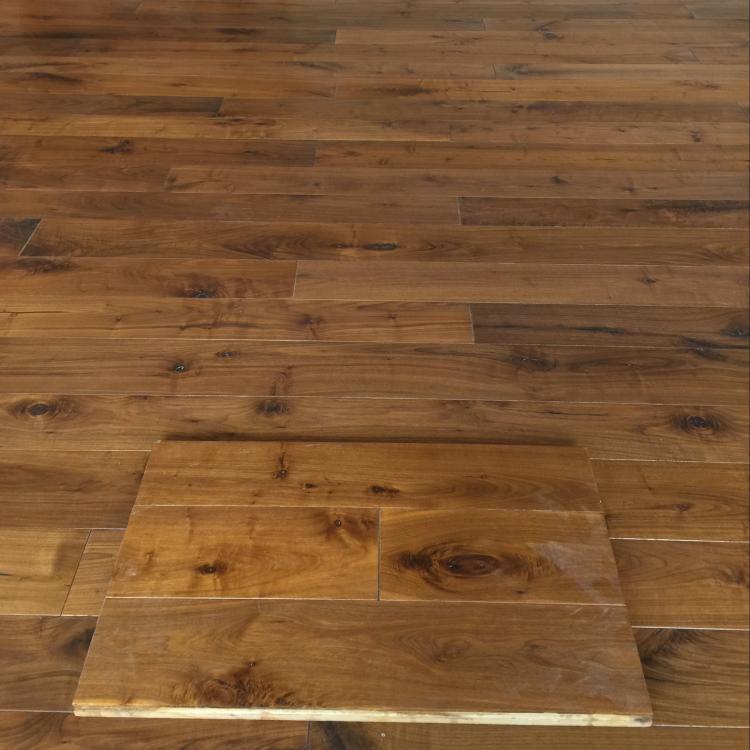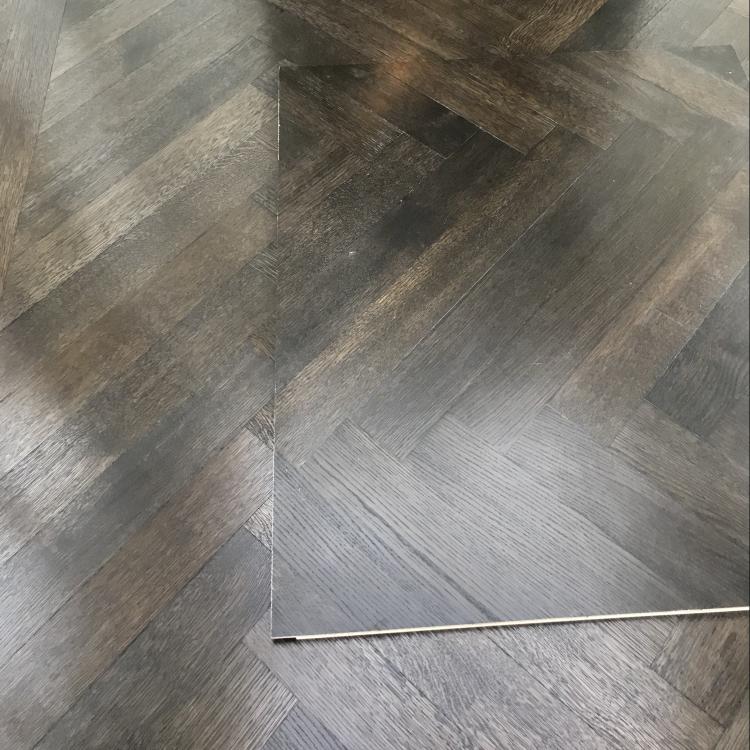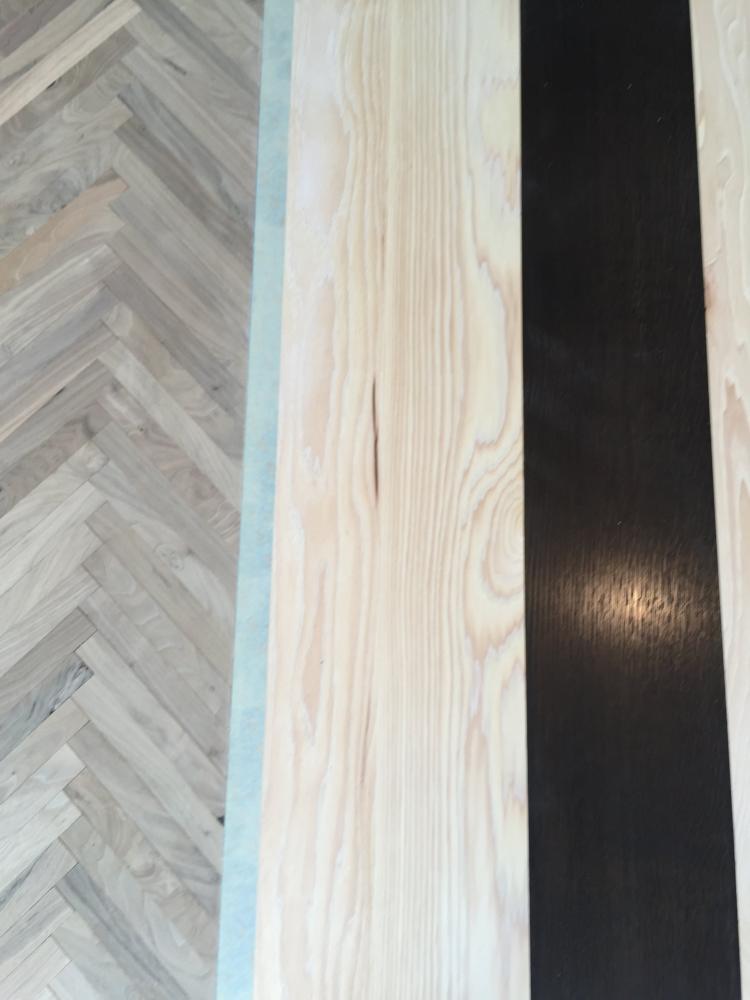- In-place finishing techniques developed over three decades that involve up to 10 finishers to achieve otherwise impossible results.
- Processes allowing us to influence the color tones of already sealed boards without glazing.
- Choosing the most appropriate floor finish for your project is our responsibility and a major consideration.
These days we hardly ever use the standard approach of wetting or bleaching the surface of floor, sanding the grain rise off, and staining floors with an oil based stain or a water dye or both. Even to achieve a similar look we have developed other techniques, like diluted bleach color glazes, and chemical dyes, that end up making floors more uniform in tone and more color stable as well. At the same time, the grain of wood has gained a lot of attractiveness by the use of such methods. Rather than covering the surface of wood with a layer of pigment or dye particles, we let the tannin in wood react with substances, and this ends up coloring sections of the same board unevenly, depending on the tannin content of soft and hard grain. And it ends up looking more natural in the end. At other times we still saturate with pigments tio accomplish a different objective. We can ebonize floors to a flawless surface by using a finishing method that requires 10 finishers applying the ebonizing black stain in continuous manner in larger rooms to avoid the lap marks, for example. Regardless of the fact if we end up installing a pre-finished floor or if we finish it on site, the final coating is done, or should be done, right before the house or apartment is turned over to the owner. What sort of floor finish the clients want to be left with is a very important decision that unfortunately, very often these days, is not being considered carefully by anyone. The designers look at colors of little samples visualizing their rugs and furnishings and the entire esthetic big picture. The floor most often is a color background for them. The architects get into these specifics of floor finish type more often, but this is not their expertise and they have been subjected to so much confusion by the flooring industry in the last decade.
In general floor finishes divide into maintainable finishes that require a periodic deep cleaning and re-application of surface coating every one to four years, depending on the wear and use, and the coated floors that do not require maintenance other than cleaning of surface. These coated floors again divide into bulletproof epoxy based finishes rarely used these days, oil based polyurethanes that used to be most commonly used between 80 and 20 years ago, but now seem almost forgotten, and the industry standard, water based urethanes. These last water based finishes are the most frequently used throughout the industry. Floors coated with these urethane can be re-coated once or twice, every 3-10 years, if needed, provided the surface is not too damaged by then, as the re-coat could actually accentuate the appearance of this broken plastic barrier damage.
The maintainable finishes divide into oxidizing oils, hardwax oils and softwax oils, and the paste wax finish. These finishes have to be re-oiled or re-waxed once every few months or years, so the floor keeps on wearing properly. Another very important issue is the fact that hardwax and softwax oiled floors cannot be washed with cleaners designed for coated floors, like Bona Kemi hardwood floor cleaner. Oiled floors need to be washed with special soaps diluted in warm water. And paste waxed floors cannon be washed with any wet cleaners at all. And that is one of the reasons that they are rarely used on floor surfaces nowadays. Hardwax oils and softwax oils were designed and developed to provide a washable soft looking natural surface of wood.

